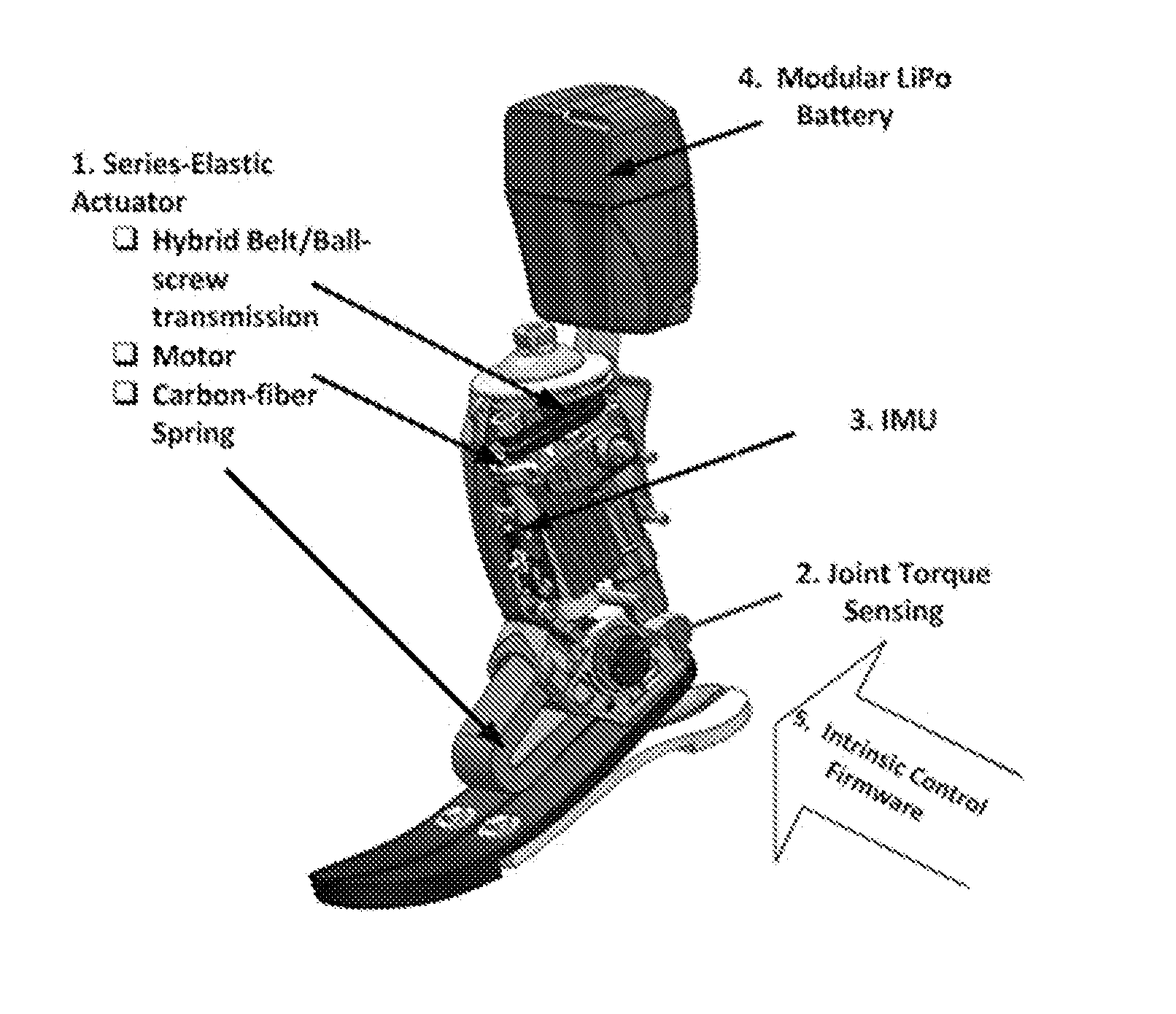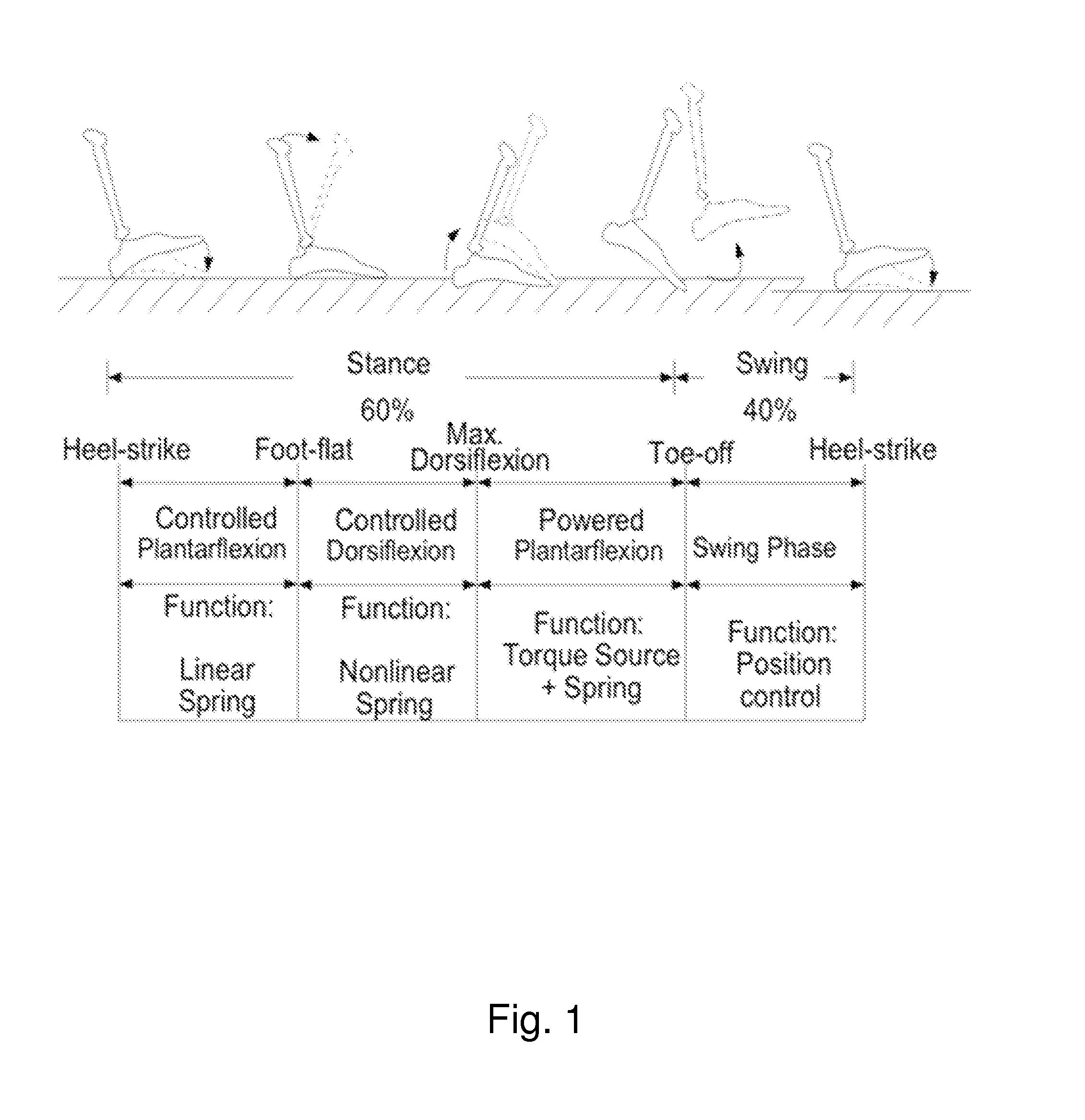Prosthetic, orthotic or exoskeleton device
a technology of prosthetic legs and exoskeletons, applied in the field of prosthetics, orthotics or exoskeleton devices, can solve the problems of abrupt transition(s) between states of prosthetic legs, or might not accommodate for changes in wearer intent, and achieve the effect of easing the transition(s)
- Summary
- Abstract
- Description
- Claims
- Application Information
AI Technical Summary
Benefits of technology
Problems solved by technology
Method used
Image
Examples
Embodiment Construction
[0047]Various embodiments of the present disclosure relate to a biologically-inspired, sensing and control architecture for bionic leg actuation (e.g., knee joint actuation, ankle joint actuation). As described herein, a bionic device may function to restore or replace anatomical structure(s) and / or exhibit physiological process(es), with one or more electro-mechanical components. For instance, bionic devices of the present disclosure may emulate stance-phase kinetics (e.g., torque and power) that may occur naturally in intact limbs. Bionic leg joints described herein may employ a series-elastic actuator (SEA) to amplify mechanical power, to enable closed-loop torque control and to enable sensing of actuator torque through a model of the torque-displacement characteristics. In some embodiments, an ankle device may employ a hardstop with known flexion characteristics that limits dorsiflexion travel of the joint. A control system modulates joint impedance (e.g., stiffness, damping), j...
PUM
 Login to View More
Login to View More Abstract
Description
Claims
Application Information
 Login to View More
Login to View More - R&D
- Intellectual Property
- Life Sciences
- Materials
- Tech Scout
- Unparalleled Data Quality
- Higher Quality Content
- 60% Fewer Hallucinations
Browse by: Latest US Patents, China's latest patents, Technical Efficacy Thesaurus, Application Domain, Technology Topic, Popular Technical Reports.
© 2025 PatSnap. All rights reserved.Legal|Privacy policy|Modern Slavery Act Transparency Statement|Sitemap|About US| Contact US: help@patsnap.com



